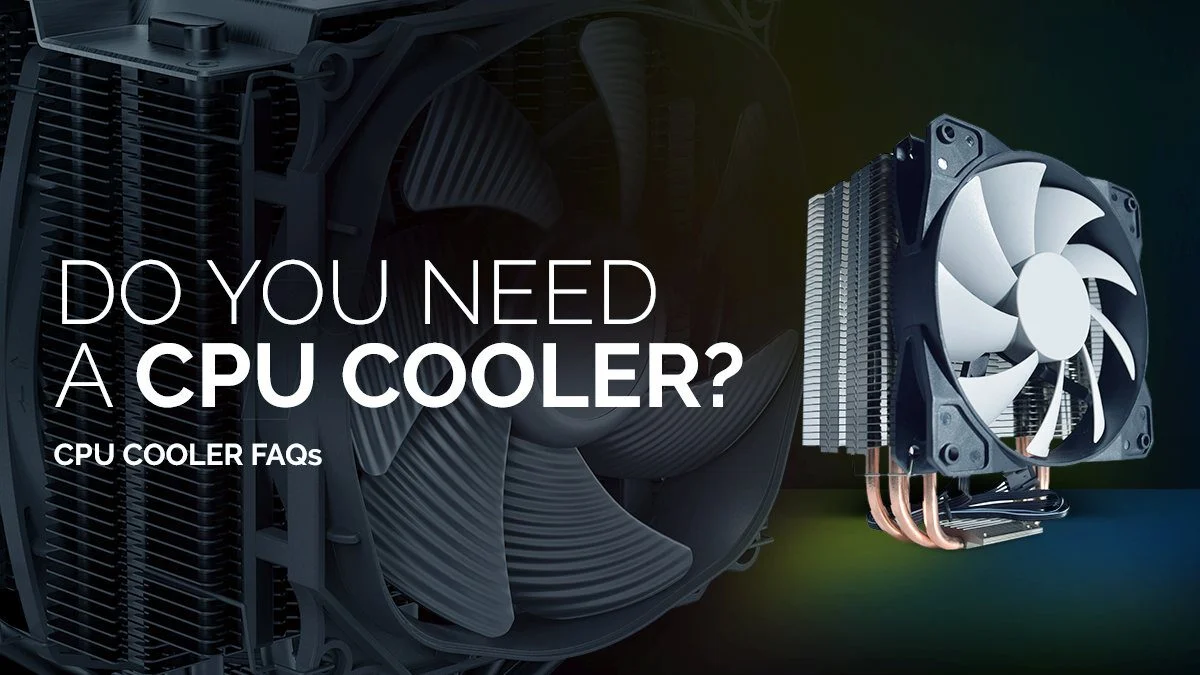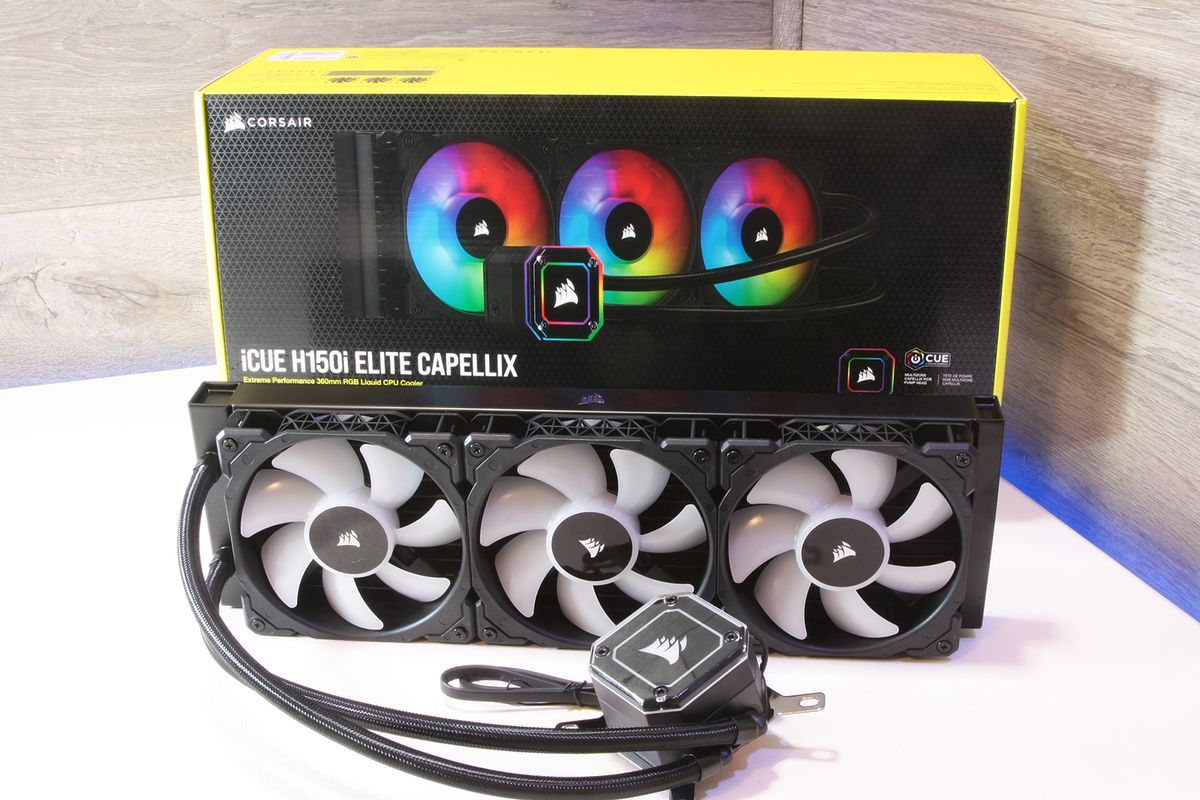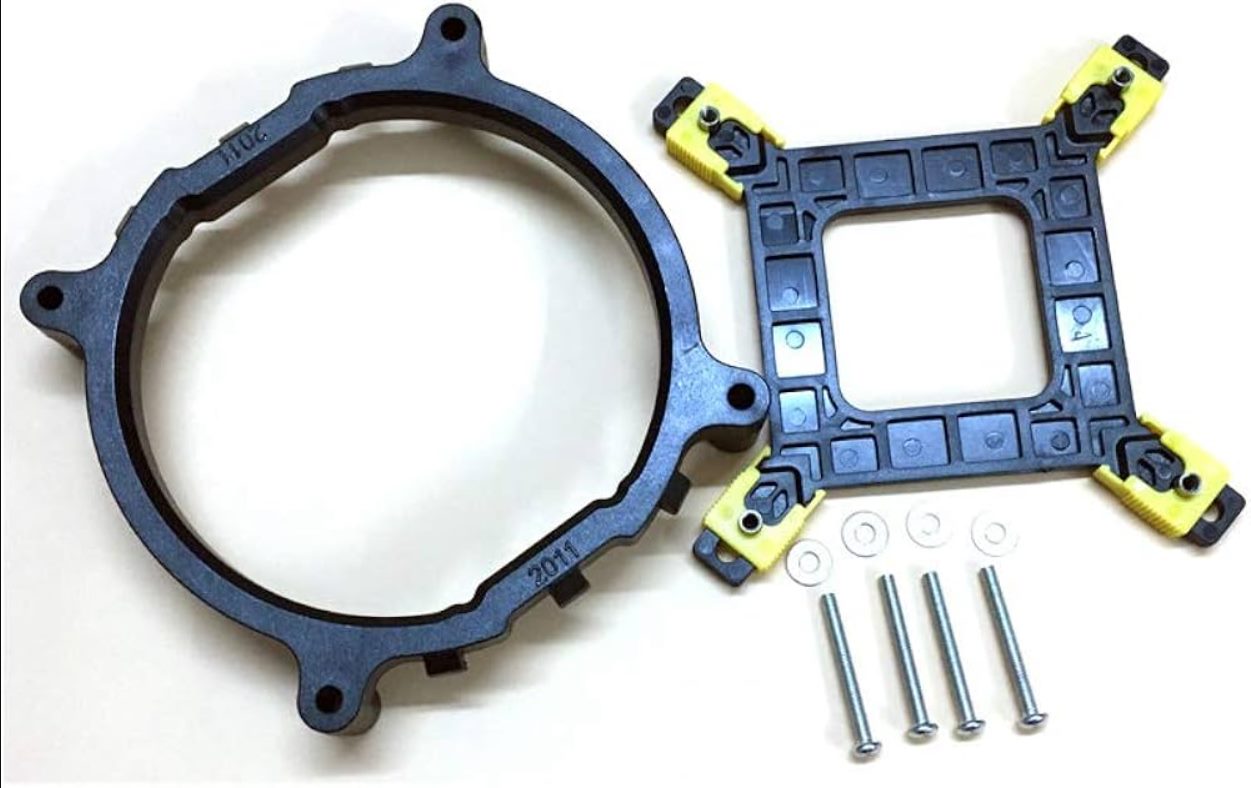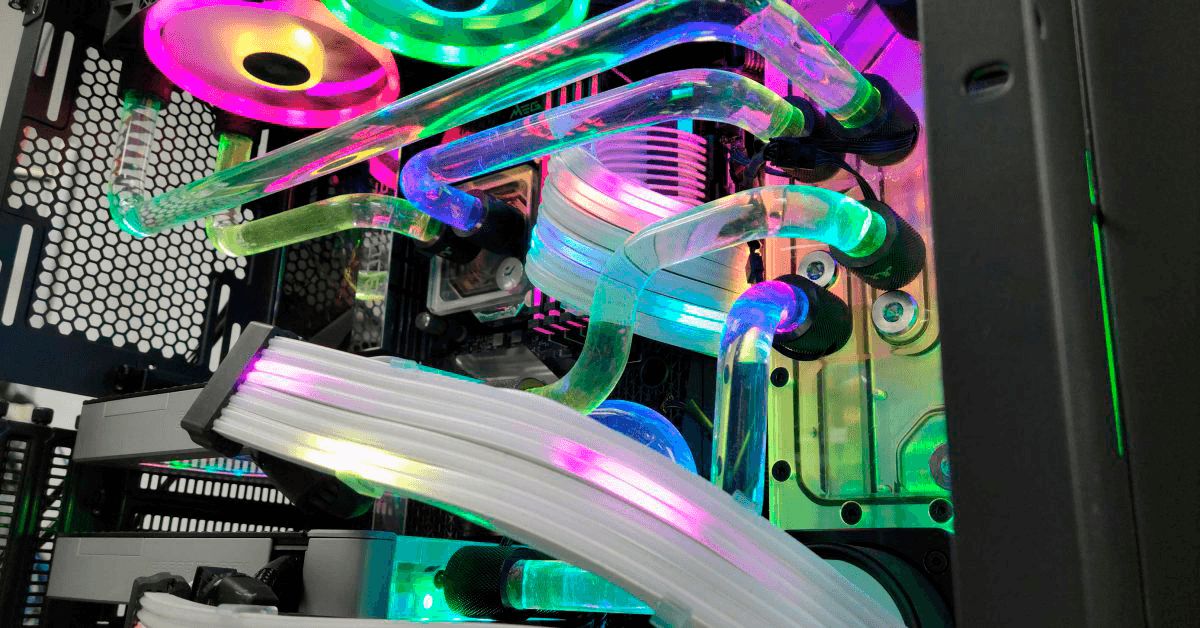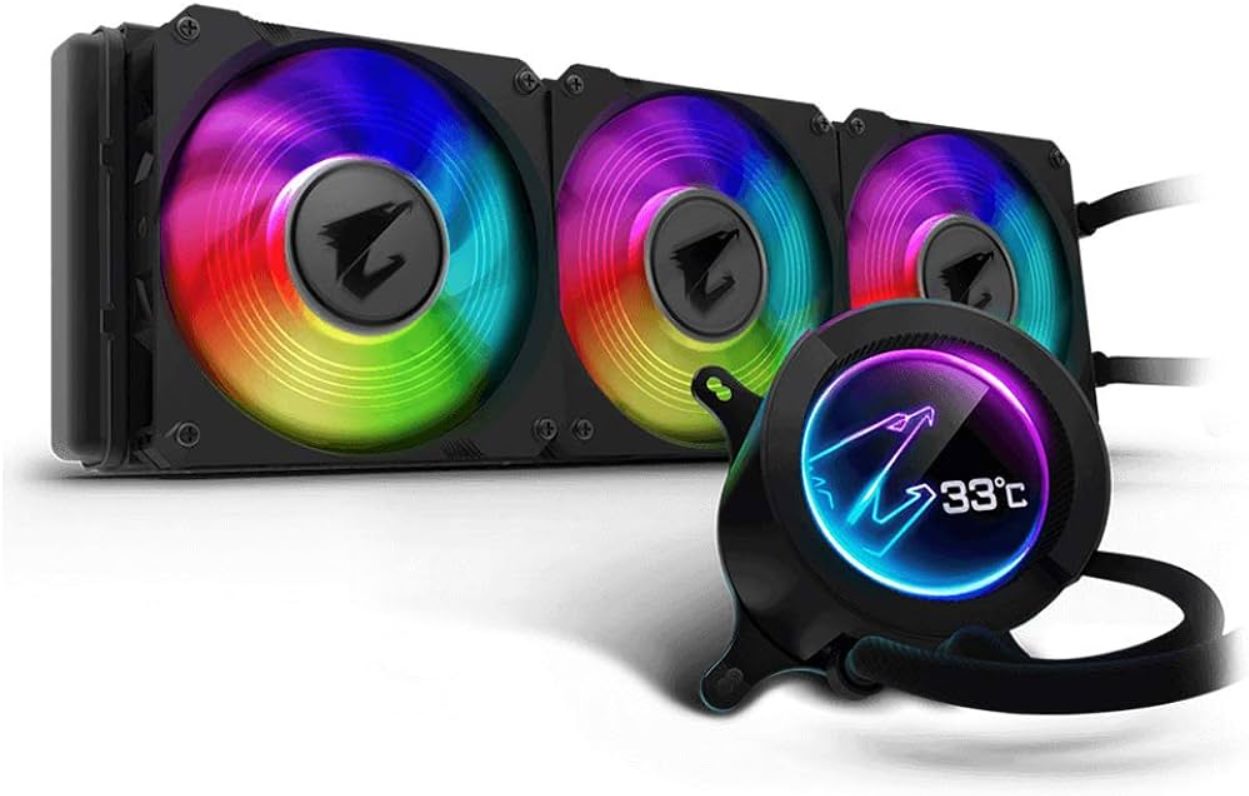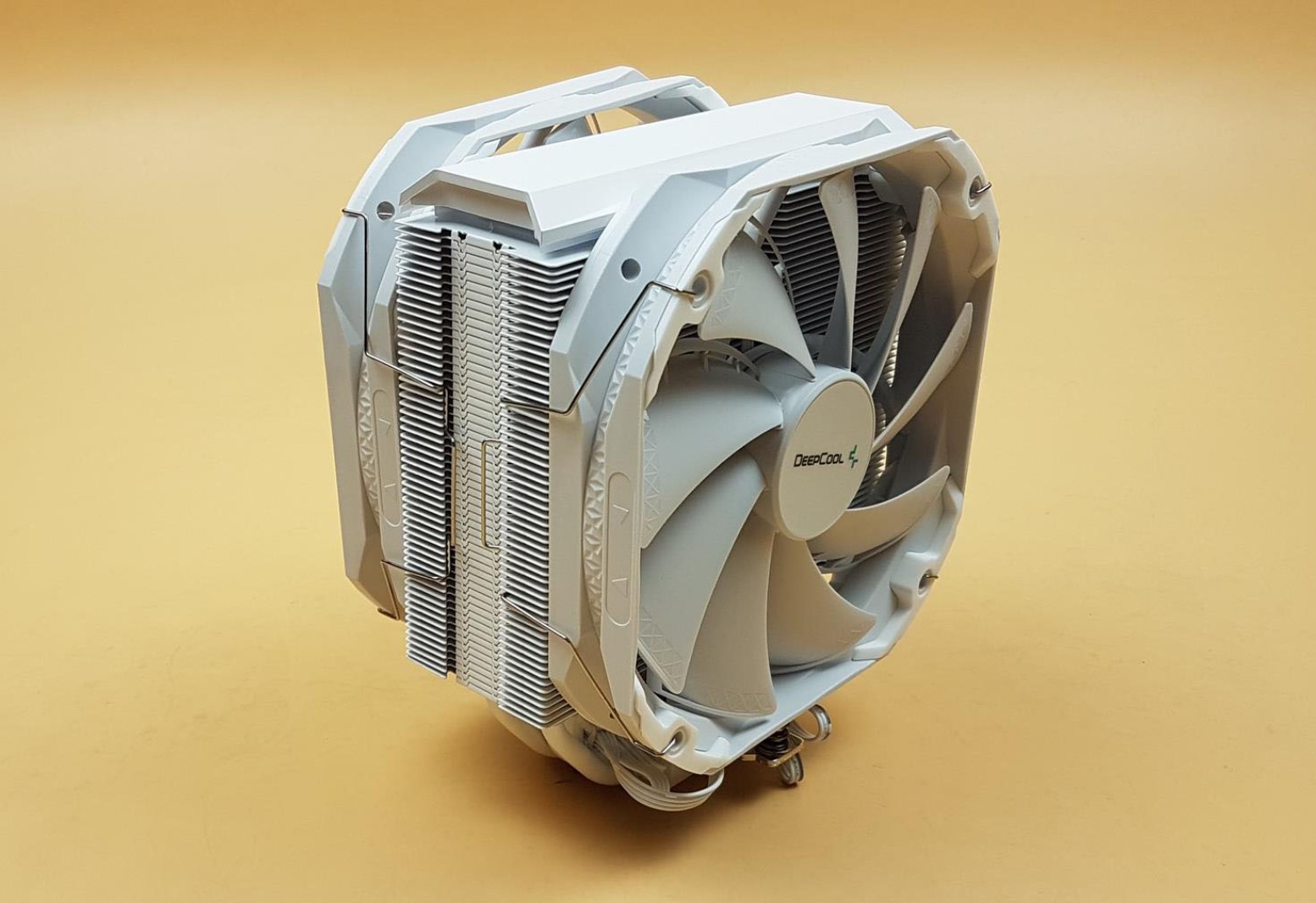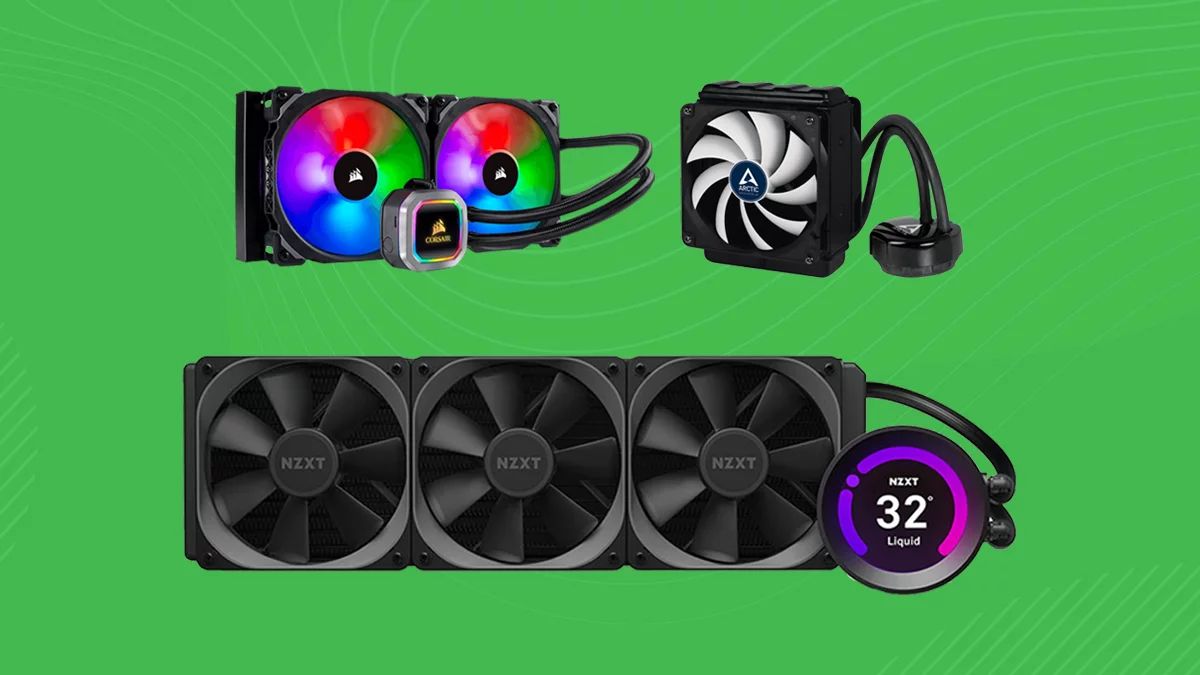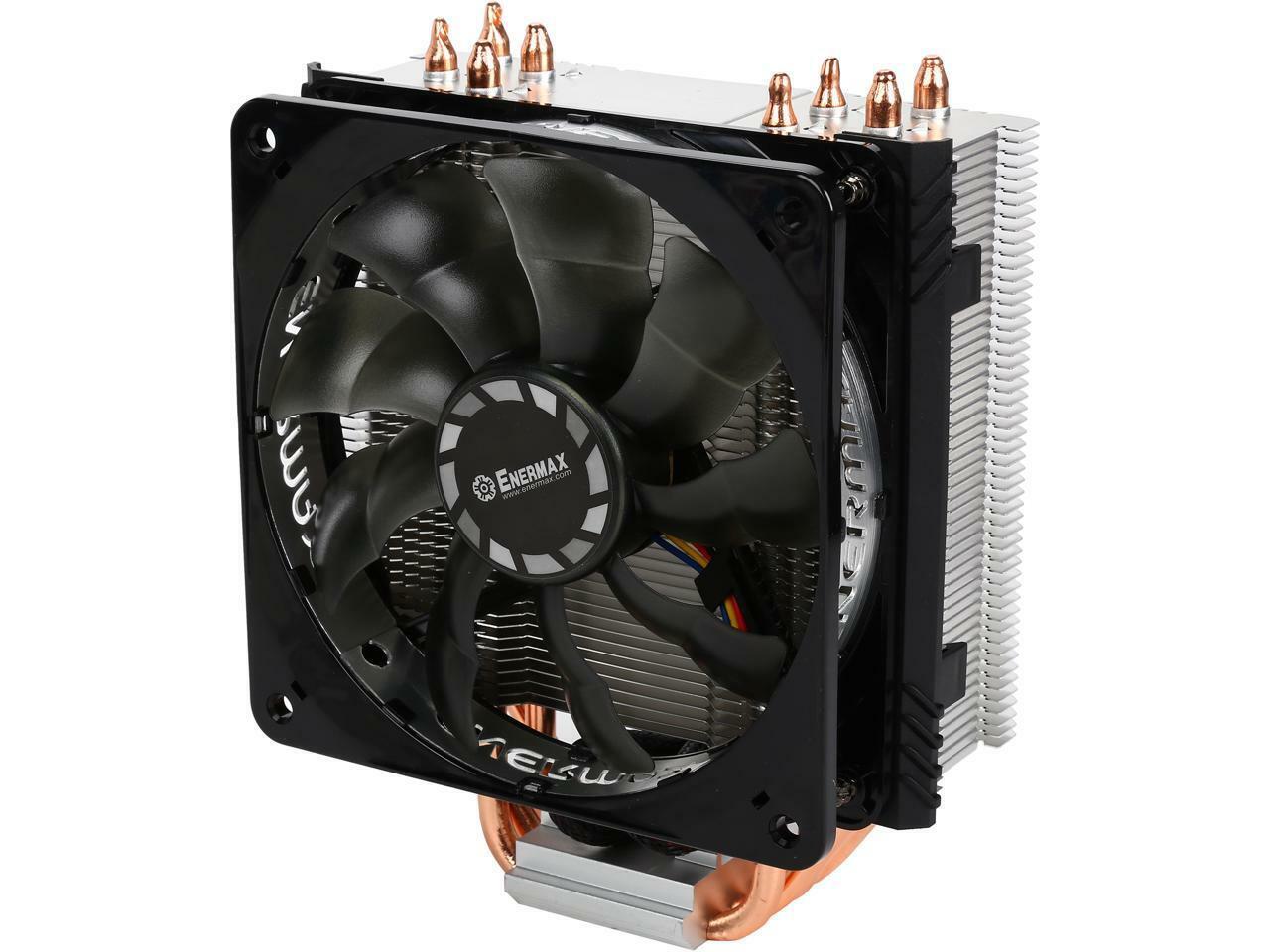Introduction
A CPU (Central Processing Unit) is the brain of a computer, responsible for executing and managing all the instructions and calculations that drive its functions. As the CPU performs these tasks, it generates a significant amount of heat. If left unchecked, this heat can damage the CPU and hinder its performance. This is where a CPU cooler comes into play.
A CPU cooler is a vital component of any computer system, designed to dissipate the heat generated by the CPU and keep it operating at optimal temperatures. It is a crucial part of maintaining the stability, reliability, and longevity of the CPU.
In this article, we will explore the role and importance of a CPU cooler, as well as the different types of coolers available in the market. We will also provide tips on choosing the right CPU cooler and offer guidance on the installation and maintenance of this essential component.
By the end of this article, you will have a clear understanding of why a CPU cooler is necessary, the different options available, and how to ensure proper cooling for your CPU.
What is a CPU Cooler?
A CPU cooler is a device or a combination of components that help regulate the temperature of the CPU. Its primary function is to dissipate the heat generated by the CPU during its operation. By doing so, it prevents the CPU from overheating and maintains its performance and longevity.
The CPU cooler typically consists of a heat sink, a fan or fans, and in some cases, a thermal conductive material. The heat sink, usually made of aluminum or copper, is responsible for absorbing and spreading the heat generated by the CPU. The fan or fans, on the other hand, facilitate the process of heat dissipation by blowing cool air onto the heat sink.
When the CPU is in use, it produces heat due to the internal electrical currents flowing through its circuits. The heat sink, which is in direct contact with the CPU, absorbs this heat. The fan then blows air over the heat sink, creating airflow that helps transfer the heat away from the CPU and into the surrounding environment.
Overall, the CPU cooler acts as a heat management system for the CPU, ensuring that it operates within safe temperature limits. By keeping the CPU cool, it prevents thermal throttling, which occurs when the CPU slows down its performance to reduce heat generation. A CPU cooler also prevents premature wear and tear of the CPU components, which can occur due to prolonged exposure to high temperatures.
Without a CPU cooler, the temperature of the CPU could rise rapidly, leading to overheating. This can cause the CPU to malfunction, resulting in system crashes, reduced performance, and even permanent damage. In extreme cases, it can even lead to a complete system shutdown or failure.
In the next section, we will delve deeper into the functioning of a CPU cooler and how it helps maintain optimal CPU temperatures.
How Does a CPU Cooler Work?
A CPU cooler works by utilizing the principles of heat transfer to regulate the temperature of the CPU. It employs a combination of components, including a heat sink, a fan or fans, and thermal conductive materials, to effectively dissipate the heat generated by the CPU.
The heat sink is the central component of a CPU cooler. It is typically made of metal, such as aluminum or copper, due to their high thermal conductivity. The heat sink is directly in contact with the CPU, allowing it to absorb the heat produced during the CPU’s operation.
Once the heat is absorbed by the heat sink, the next step is to dissipate it. This is where the fan or fans come into play. The fan blows cool air onto the surface of the heat sink, creating airflow. This airflow helps transfer the heat from the heat sink to the surrounding environment, effectively cooling down the CPU.
The thermal conductive materials, such as thermal paste or thermal pads, are used to enhance the heat transfer between the CPU and the heat sink. These materials fill the microscopic gaps between the CPU and the heat sink, improving the thermal conductivity and ensuring efficient heat transfer.
As the fan blows air over the heat sink, it carries away the heat absorbed by the heat sink. The warm air then moves away from the CPU, allowing cool air to take its place. This continuous cycle of airflow helps maintain the CPU’s temperature within optimal limits.
The effectiveness of a CPU cooler depends on several factors, including the size and design of the heat sink, the speed and airflow of the fan, and the thermal conductivity of the materials used. A well-designed CPU cooler will effectively dissipate heat and keep the CPU at a safe operating temperature.
In the next section, we will discuss the importance of CPU cooling and why it is crucial for the performance and longevity of your system.
The Importance of CPU Cooling
CPU cooling is of utmost importance for the smooth operation, performance, and longevity of a computer system. Without proper cooling, the CPU can quickly overheat, leading to a range of issues that can negatively impact the system and its components.
One of the primary reasons for CPU cooling is to prevent overheating. When a CPU operates at high temperatures for prolonged periods, it can lead to thermal throttling. Thermal throttling is a mechanism through which the CPU reduces its performance to lower heat generation and prevent damage. As a result, the system may experience noticeable slowdowns and decreased responsiveness.
Overheating can also cause system instability and random crashes. When the temperature of the CPU gets too high, it can no longer perform its tasks reliably, leading to system malfunctions and unexpected shutdowns. This can result in data loss, interrupted work, and frustration for the user.
Furthermore, excessive heat can significantly reduce the lifespan of the CPU. High temperatures can degrade the materials and components of the CPU over time, causing them to wear out more quickly. This can lead to the CPU failing prematurely, requiring costly repairs or replacement.
In addition to protecting the CPU, cooling also plays a role in maintaining other critical components of the system, such as the motherboard and RAM. These components can also generate heat during operation, and without proper cooling, their temperatures can rise, increasing the risk of instability and component failure.
Efficient CPU cooling also allows for better overall system performance. When the CPU operates at lower temperatures, it can maintain its maximum clock speed for longer durations, resulting in improved processing power and faster execution of tasks. This is especially crucial for demanding applications, such as gaming or video editing, where the CPU is under heavy load.
Moreover, proper CPU cooling contributes to a quieter and more comfortable computing experience. By efficiently dissipating heat, the CPU cooler can prevent the fan from running at high speeds constantly, reducing the noise generated by the system. This is particularly important for individuals who prefer a quiet working or gaming environment.
To ensure the long-term health and optimal functioning of your computer system, investing in a reliable CPU cooling solution is essential. In the next sections, we will explore the different types of CPU coolers available on the market, as well as factors to consider when choosing the right one for your system.
Different Types of CPU Coolers
There are several types of CPU coolers available on the market, each with its own advantages and limitations. Understanding the different options can help you make an informed decision when choosing the right CPU cooler for your system.
1. Air CPU Coolers: Air coolers are the most common and widely used type of CPU coolers. They consist of a heat sink with fins and one or more fans to blow air over the fins. Air coolers are effective at dissipating heat and come in various sizes and designs to accommodate different CPU socket types and form factors. They are affordable, easy to install, and generally provide adequate cooling for most CPUs.
2. Liquid CPU Coolers: Liquid coolers, also known as AIO (All-in-One) coolers, use a combination of a water block, radiator, pump, and fans to cool the CPU. The water block sits on top of the CPU, absorbing the heat, which is then transferred to the radiator through tubes filled with coolant. The radiator, equipped with fans, dissipates the heat into the surrounding air. Liquid coolers offer efficient cooling performance, especially for high-end CPUs and overclocking, but they are generally more expensive and can be more challenging to install.
3. Passive CPU Coolers: Passive coolers rely solely on the heat sink’s design without any active cooling components such as fans or pumps. They use natural convection and rely on the conduction of heat through the heat sink’s fins to dissipate heat. Passive coolers are typically used in low-power and fanless systems, such as small form factor PCs or media centers. While they provide silent operation, they are less effective at cooling high-performance CPUs and require sufficient airflow in the computer case.
4. Hybrid CPU Coolers: Hybrid coolers combine both air and liquid cooling technologies, offering the best of both worlds. They typically consist of a liquid cooling loop for the CPU and a heat sink with fans to cool other components, such as VRMs (Voltage Regulator Modules) or memory modules. Hybrid coolers provide efficient CPU cooling and help maintain low temperatures for other critical components.
Each type of CPU cooler has its own pros and cons, and the choice ultimately depends on your specific requirements, budget, and system configuration. Factors to consider include CPU compatibility, cooling performance, noise levels, installation complexity, and maintenance needs.
In the next section, we will discuss how to choose the right CPU cooler for your system and provide some tips for installation and maintenance.
Air CPU Coolers
Air CPU coolers are the most common and widely used type of cooling solution for CPUs. They consist of a heat sink with fins and one or more fans to cool the CPU. Air coolers are known for their reliable performance, affordability, and ease of installation.
The heat sink is the central component of an air cooler. It is typically made of aluminum or copper due to their high thermal conductivity. The heat sink is in direct contact with the CPU, allowing it to absorb the heat generated during operation.
The heat absorbed by the heat sink is then dissipated through the fins. These fins increase the surface area of the heat sink, allowing for better heat dissipation. The fans mounted on the heat sink blow air over these fins, creating airflow that aids in transferring the heat away from the CPU.
Air coolers come in various sizes and designs to accommodate different CPU socket types and system configurations. They range from compact coolers suitable for small form factor builds to larger tower coolers designed for high-performance CPUs.
One of the key advantages of air coolers is their cost-effectiveness. They are generally more affordable compared to liquid coolers, making them a popular choice among budget-conscious users. Air coolers also have a long lifespan and typically do not require regular maintenance or coolant replacements.
Furthermore, air coolers are relatively easy to install. Most come with universal mounting brackets and clear instructions, making the installation process straightforward. They also provide solid cooling performance for a wide range of CPUs, ensuring stable operation and preventing thermal throttling.
However, it is important to consider the size and compatibility of air coolers with your PC case and motherboard. Larger air coolers may require sufficient clearance in the case, especially for smaller form factor builds. Additionally, the weight of some high-end air coolers can put stress on the motherboard, so ensuring proper support and reinforcement is necessary.
Noise levels can also be a consideration with air coolers, as the fans can generate some noise when running at higher speeds. However, many air coolers come with fan speed controls or offer options for quieter operation.
In summary, air coolers are reliable, cost-effective, and easy to install cooling solutions for CPUs. They provide efficient cooling performance for most systems and are suitable for a wide range of budgets and configurations.
In the next section, we will discuss another popular type of CPU cooler, the liquid CPU cooler, and its advantages and considerations.
Liquid CPU Coolers
Liquid CPU coolers, also referred to as AIO (All-in-One) coolers, have gained popularity among users seeking high-performance cooling solutions for their CPUs. These coolers utilize a liquid cooling system to dissipate the heat generated by the CPU. While they can be more expensive and complex to install than air coolers, they offer several advantages that make them an attractive option for enthusiasts and overclockers.
A liquid CPU cooler consists of a water block, radiator, pump, tubes, and fans. The water block is positioned on top of the CPU and serves as the primary contact point for heat transfer. It absorbs the heat generated by the CPU and transfers it to the liquid coolant circulating through the system.
The heated liquid coolant then flows through the tubes to the radiator, which is equipped with fans. The radiator’s purpose is to dissipate the heat absorbed by the liquid coolant. As the fans blow air over the radiator, the heat is released into the surrounding environment, effectively cooling down the liquid coolant before it returns to the water block.
One significant advantage of liquid CPU coolers is their exceptional cooling performance. The use of liquid coolant allows for efficient heat transfer, resulting in lower CPU temperatures compared to air coolers. This is especially beneficial for users who engage in demanding tasks such as overclocking, where higher CPU temperatures can be a concern.
Liquid coolers are also known for their flexibility in terms of space requirements. They generally have a smaller form factor compared to bulky air coolers, making them suitable for compact PC cases or builds with limited space. This allows for better compatibility with various system configurations.
Another advantage of liquid coolers is their ability to provide a quieter computing experience. Their design allows for more efficient heat dissipation, reducing the need for the fans to operate at high speeds. As a result, liquid coolers tend to generate less noise compared to air coolers, providing a quieter working or gaming environment.
However, it’s important to note that liquid CPU coolers can be more expensive than air coolers. They also require additional components, such as a pump and radiator, which can add to the overall cost. Additionally, the installation process of liquid coolers can be more complex, involving mounting the radiator, connecting tubes, and ensuring proper airflow within the case.
Maintenance is also a consideration with liquid coolers. While they typically don’t require regular maintenance like custom water cooling loops, occasional cleaning and checks for any leaks or pump issues are recommended to ensure optimal performance.
In summary, liquid CPU coolers offer excellent cooling performance, flexibility in form factor, and quieter operation compared to air coolers. They are a popular choice for users seeking enhanced cooling capabilities and are willing to invest in a more advanced cooling solution.
In the next section, we will explore passive CPU coolers and their benefits for specific system configurations.
Passive CPU Coolers
Passive CPU coolers offer a unique cooling solution that eliminates the need for active cooling components like fans or pumps. Instead, they rely on the design and materials of the heat sink to dissipate CPU heat through natural convection and conduction. Passive coolers are commonly used in low-power systems, compact builds, or scenarios where silent operation is a priority.
The design of a passive CPU cooler typically consists of a large heat sink with numerous fins, allowing for increased surface area for heat dissipation. Copper or aluminum is often used as the material for the heat sink due to its ability to conduct heat effectively.
Passive coolers operate on the principle of natural convection, where heat rises from the CPU and is transferred to the heat sink. As the heated air rises, cooler air flows in to take its place, resulting in a natural airflow that facilitates heat dissipation. Additionally, heat is conducted through the fins of the heat sink, aiding in the cooling process.
One major advantage of passive CPU coolers is their silent operation. Without any fans or pumps, they do not generate any noise, offering a completely noiseless computing experience. This makes passive coolers ideal for users who prioritize a quiet environment or for specialized applications where noise interference cannot be tolerated.
Another benefit of passive coolers is their reliability and low maintenance requirements. With no moving parts, there is less chance of component failure or mechanical issues. Additionally, passive coolers generally do not require regular maintenance such as cleaning or coolant replacements, making them very convenient for users.
Passive coolers are often preferred for low-power systems or fanless builds, such as home theater PCs or small form factor systems. These types of systems generate less heat, making passive cooling a viable option for maintaining optimal temperatures.
However, it’s important to note that passive coolers have certain limitations. They are typically designed for CPUs with lower power requirements and moderate heat output. For high-performance or overclocked CPUs, passive cooling may not provide sufficient heat dissipation, leading to thermal throttling and reduced performance.
Furthermore, passive coolers rely on proper airflow within the computer case to be effective. Adequate ventilation and circulation are crucial for passive cooling to function optimally. It’s important to consider case design and overall system airflow when using a passive cooler to ensure proper heat dissipation.
In summary, passive CPU coolers offer a silent and low-maintenance cooling solution that is ideal for low-power systems or situations where noise reduction is a priority. They provide a reliable and efficient cooling method that eliminates the need for fans or pumps.
In the next section, we will discuss important factors to consider when choosing the right CPU cooler for your specific needs.
Choosing the Right CPU Cooler
Choosing the right CPU cooler is crucial for maintaining optimal temperatures and ensuring the stable performance of your CPU. Factors such as CPU compatibility, cooling performance, noise levels, installation process, and budget should be considered when selecting a CPU cooler that best suits your needs.
1. CPU Compatibility: Ensure that the CPU cooler you choose is compatible with your specific CPU socket. Different CPUs have different socket types, so it is essential to check for compatibility before making a purchase.
2. Cooling Performance: Consider the cooling performance offered by the CPU cooler. Look for cooling benchmarks and reviews to assess how well it handles heat dissipation and keeps the CPU temperature within acceptable limits, particularly if you intend to engage in tasks that put high demands on the CPU, such as gaming or video editing.
3. Noise Levels: Consider the noise levels of the CPU cooler, especially if you prioritize a quiet computing environment. Look for coolers that offer a good balance between cooling performance and noise output. Reviews and user feedback can help determine the noise level of a specific CPU cooler.
4. Installation Process: Evaluate the installation process of the CPU cooler. Some coolers can be more challenging to install, requiring additional steps or specific tools. Consider your comfort level with PC assembly and choose a cooler that aligns with your technical skills and preferences.
5. Budget: Set a budget for your CPU cooler. Air coolers tend to be more budget-friendly, while liquid coolers and high-performance options can be more expensive. It’s important to find a balance between cost and cooling performance that meets your requirements.
6. Form Factor: Consider the size and weight of the CPU cooler in relation to your PC case. Ensure that there is sufficient clearance and support for the cooler, especially for larger air coolers or liquid coolers with radiators.
7. Longevity and Durability: Consider the lifespan and durability of the CPU cooler. Look for reputable brands known for producing high-quality coolers that can withstand long hours of operation and provide reliable performance over time.
8. Warranty: Check if the CPU cooler comes with a warranty. A warranty ensures that you are protected in case of any manufacturing defects or issues with the cooler.
By considering these factors, you can make an informed decision and choose the CPU cooler that best suits your needs and system requirements.
In the next section, we will provide some tips for the installation and maintenance of your chosen CPU cooler to ensure its optimal performance.
Installation and Maintenance Tips
Proper installation and maintenance of your CPU cooler are crucial for optimal performance and longevity. Here are some tips to help you with the installation process and ensure the ongoing maintenance of your chosen CPU cooler:
1. Read the Manual: Before starting the installation, carefully read the instruction manual provided with your CPU cooler. Different coolers may have specific installation requirements, so it’s important to follow the manufacturer’s guidelines.
2. Prepare the Workspace: Ensure you have a clean and well-lit workspace to assemble your computer and install the CPU cooler. Remove any static electricity by grounding yourself, and consider using an anti-static wristband to avoid damaging sensitive components.
3. Apply Thermal Paste Correctly: If your CPU cooler requires thermal paste, apply it correctly to ensure optimal heat transfer between the CPU and the cooler. Follow the instructions provided in the manual for the appropriate amount and application method.
4. Secure the Cooler Properly: Ensure that the CPU cooler is securely mounted and properly aligned with the CPU socket. Use the provided brackets and screws to firmly attach the cooler to the motherboard. It’s essential to apply even pressure to ensure good contact between the CPU and the cooler.
5. Consider Cable Management: Pay attention to cable management when installing the CPU cooler. Proper cable routing can improve airflow within the case and prevent any interference with the cooler’s fans or radiator, ensuring efficient cooling performance.
6. Regularly Clean Dust Buildup: Dust accumulation can hinder the cooling performance of your CPU cooler over time. Regularly clean the cooler’s fins, fans, and radiator using compressed air or a soft brush to remove any dust buildup and maintain optimal airflow.
7. Monitor Temperatures: Keep an eye on the CPU temperatures using software monitoring tools. This allows you to identify any potential issues with cooling performance and address them promptly, ensuring the CPU operates within safe temperature ranges.
8. Check for Leaks (for liquid coolers): If you have a liquid CPU cooler, periodically check for any signs of leaks or abnormal fluid levels. Leaks can lead to component damage or system failure, so it’s crucial to address them immediately if detected.
9. Follow Maintenance Guidelines: Follow the manufacturer’s maintenance guidelines, if provided. Some CPU coolers may require periodic maintenance, such as coolant replacement or pump operation checks. Adhering to these guidelines will help ensure the longevity and performance of your CPU cooler.
By following these installation and maintenance tips, you can maximize the effectiveness and lifespan of your CPU cooler, keeping your system running cool and stable.
In the final section of this article, we will conclude with a summary of the importance and benefits of having a quality CPU cooler.
Conclusion
A CPU cooler is an essential component for any computer system. It plays a crucial role in regulating the temperature of the CPU and ensuring its optimal performance and longevity. By dissipating the heat generated by the CPU, a CPU cooler prevents overheating, thermal throttling, system instability, and component failure.
There are different types of CPU coolers available, including air coolers, liquid coolers, and passive coolers. Air coolers offer reliable performance, affordability, and ease of installation, making them a popular choice for many users. Liquid coolers provide efficient cooling performance, especially for high-performance CPUs and overclocking scenarios. Passive coolers offer silent operation and low maintenance requirements, making them ideal for low-power systems or applications where noise reduction is a priority.
When choosing a CPU cooler, it’s important to consider factors such as CPU compatibility, cooling performance, noise levels, installation process, and budget. Each system has unique requirements, and finding the right balance between cooling efficiency and personal preferences is crucial.
Proper installation and maintenance are essential for the optimal performance of a CPU cooler. Following the manufacturer’s guidelines, applying thermal paste correctly, ensuring secure mounting, and regular cleaning are some of the key steps to take. Monitoring temperatures and addressing any maintenance or leakage issues promptly are also important for long-term performance and reliability.
In conclusion, investing in a quality CPU cooler is a wise decision to protect your CPU, maintain system stability, and achieve optimal performance. Whether you choose an air cooler, liquid cooler, or passive cooler, the right cooling solution will ensure that your computer operates smoothly and efficiently, even during demanding tasks. Prioritize proper cooling to extend the lifespan of your CPU and enjoy a reliable and enjoyable computing experience.







